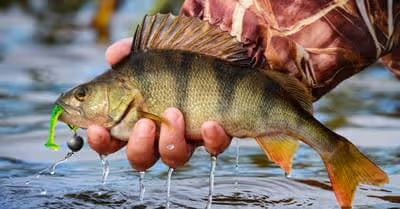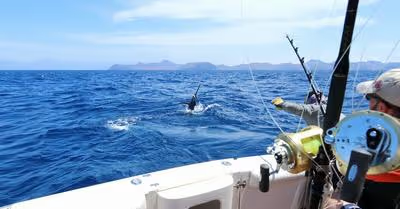Table of Contents
The Science Behind Fish Vision
Although fish have eyes that are similar to those of land-dwelling vertebrates such as birds and mammals, their lenses tend to be more spherical. Unlike birds and mammals (including humans) that regulate the focus by altering the shape of their lens, fish adjust the focus by bringing the lens closer or further to the retina. This fundamentally enables them to see in low light situations.
Using Color to See
In addition to color vision, most fish species have cone cells and rod cells. These features are important in dealing with the different light waves in the water. Speaking of different light waves, the water tends to absorb light waves differently. For instance, blue and green light can penetrate the water to 200 meters below the surface while red and orange light can be absorbed within the first 20 meters. This perhaps explains why most deep-sea fish species tend to be red as they are devoid of the red light. As a result, their red colors appear black in the water, which makes them less visible to prey and predators.
Water Clarity
Whether clear or murky, water clarity can also affect a fish’s vision. A lot of factors such as algae, rain, and even snow can change water clarity. In most cases, fish can see almost 100 feet away if the water is clearer. On the other hand, their vision becomes more limited to a few inches when the water is murkier.
Fish Vision Based on Water Depth
Most fish species live within 200 meters of the water surface. Known as epipelagic fish, they mainly use their vision to escape predators and hunt for prey. This means that they aren’t adapted to extreme low-light conditions. Some of these species include bass, tuna, and herring.
The next zone extends from 200 meters to 1,000 meters below the ocean’s surface. While you’ll be rarely fishing at this depth, the fish species have large eyes and big lenses to help them deal with greatly diminished light levels. In other words, they have high light sensitivity to help them survive in these conditions. The main feature of such fish species is their upward-facing eyes, which play a crucial role in helping them detect their predators and prey camouflaging in the dim light above them. They include bigeye tuna, barreleye, and lantern fish.
Much deeper is the midnight zone where it’s completely dark with no single sign of light. At this level, you’re likely to find barracuda, fangtooth, and bristlemouth. Given that there’s no light at this level, these fish species naturally rely on their sense of smell, lateral line, and sound to survive. Other rare species produce their own light to hunt and look for prey.
So How Do Fish Survive In The Dark?
While many people would presume that fish have difficulty seeing in the dark, this is far from the truth.
The fact that water is a low-light environment has made most fish species to adapt so that they’re less dependent on vision. As such, they navigate the darkness through the lateral line, which is a unique sensory system that runs across the length of their bodies.
This helps them detect vibration, movement, and pressure changes in the water which is crucial in schooling behavior, hunting prey, escaping predators, and special awareness.
Again, most fish species have big large round lenses that make them put to good use the light from the moon and the stars. Other fish species such as catfish use chemoreceptors, which are highly-sensitive chemical substances that give them an incredible sense of smell. This allows them to smell everything around them and act accordingly. Sharks, eels, and rays have ampullae of Lorenzini, which is essentially a unique sensory organ that helps them detect electrical variation in water.
How to Fish at Night
The most important thing when it comes to fishing at night is being aware of the type of fish to target and how they behave in the dark. For instance, catfish, carp, and walleye are generally more active at night and could be a good starting point. At night, they’ll feed differently as they rely on their lateral lines to detect movement and vibration in the water. For this reason, you should use noisy or moving lures to attract and catch more fish.
All in all, you can fish at night as what you may perceive as dark is enough to offer fish enough vision to feed and move around. And even if some fish species cannot see in the dark, they have the lateral lines and other sensory adaptations that enable them to detect movement, vibrations, and of course, to survive!
Recent Articles
















